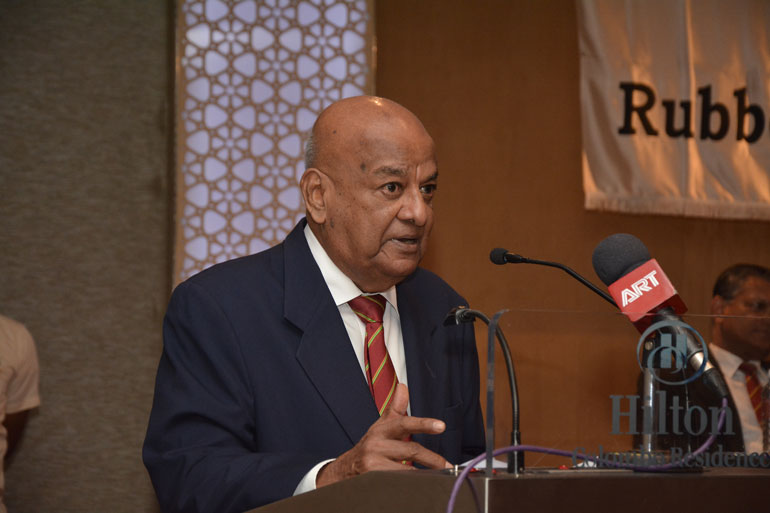Friday Dec 05, 2025
Friday Dec 05, 2025
Monday, 15 June 2015 00:00 - - {{hitsCtrl.values.hits}}

CRTA Chairman M.S. Rahim – Pic by Upul Abayasekara
By Charumini de Silva
The Colombo Rubber Traders Association (CRTA) called on the Government to re-evaluate industry policies in the wake of reduced production and weak international demand.
CRTA Chairman M.S. Rahim said the export cess of Rs. 15 per kilogram levied by the Government had largely contributed to making export prices to niche world markets unattractive, leading to a decline in exports of thick pale crepe, scrap crepe, sole crepe and TSR.
Pointing out that Sri Lanka was the only producer of these grades, Rahim urged the Government to remove the cess and grant relief to exporters when world markets were facing difficulties due to slow demand.
Rahim made these remarks while addressing the 96th Annual General Meeting of CRTA in Colombo recently.
He went on to say that as recognised premium grades of rubber, these were not consumed by local rubber product manufactures as input in their products. He added that the imposition of export cess on these grades had not reached its objective of encouraging increased consumption in value-added products for export.
In view of the drastic decline in prices, a guaranteed price of Rs. 300 per kilogram for all grades of RSS was offered to rubber smallholders from 15 November 2014 to January 2015 via a scheme implemented by Rubber Development Department (RDD).
However, with the Government change in January 2015 they decided to pay a guaranteed price and introduced a scheme to support the smallholders that produce bulk of RSS rubber. It was granted Rs. 350 for RSS1, Rs. 325 for RSS 2/3 and Rs. 300 for RSS 4/5.
Rahim explained that the new guaranteed price greatly benefited smallholders.
“As smallholders produce the majority of RSS 3, 4 and 5 they can receive the subsidy based on the difference in price achieved at local auctions held at the Ceylon Chamber of Commerce (CCC). Thereby, they achieve a maximum price of Rs. 300, which will be most profitable and well above world market prices,” he added.
Pointing out that this new scheme had created inequality in the industry he said: “Unfortunately, plantation companies and large estate owners were exempted from this subsidy; despite the fact that they produced good quality RSS 1, 2 and 3.”
Due to the adverse weather conditions that prevailed during 2014, there was a drastic drop in production. The year ended with a total production of 98,570 tonnes.
Commenting on the price declines, he said: “At the beginning of January 2014 latex crepe no.1X obtained Rs. 410, while RSS1 fetched Rs. 345 per kilogram. However, by the end of January prices dropped sharply to Rs. 310 for latex crepe no.1X and Rs. 278 for RSS 1. Thereafter, prices continued to drop further to Rs. 295 for latex crepe no.1X while RSS 1 dropped to its lowest Rs. 250 at the end of 2014.”